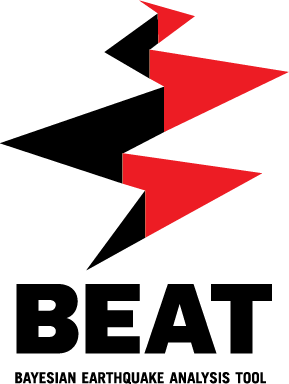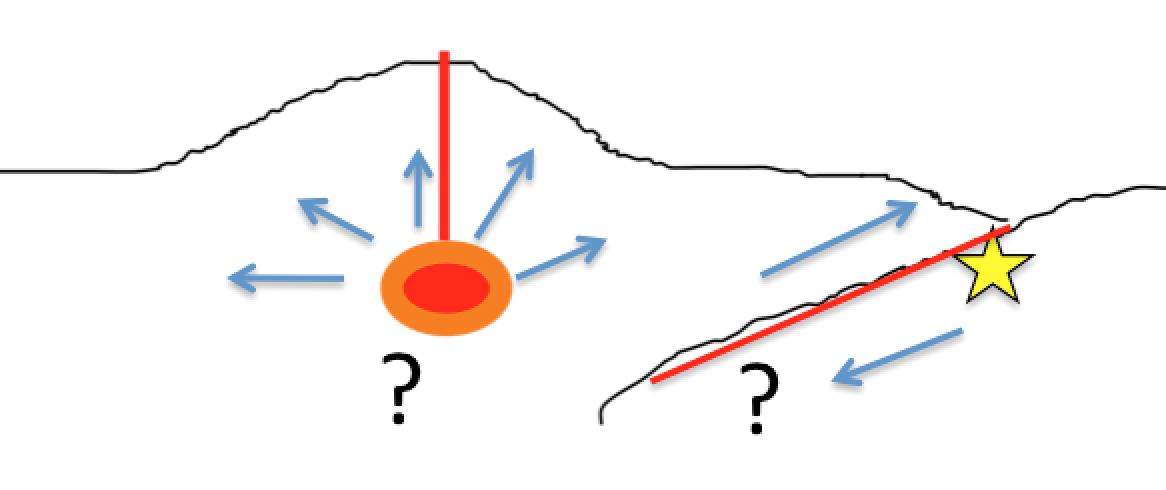Welcome to beat’s documentation!¶

Author: Hannes Vasyura-Bathke
Citing BEAT¶
The development of BEAT lead to several publications that describe theory and methods in detail. If your work results in an publication where you used BEAT we kindly ask you to consider citing the BEAT software package and the related article(s). Doing so is essential for maintaining and further developing the software.
Vasyura-Bathke, Hannes; Dettmer, Jan; Dutta, Rishabh, Mai, Paul Martin; Jónsson, Sigurjón (2021): Accounting for theory errors with empirical Bayesian noise models in nonlinear centroid moment tensor estimation. Geophysical Journal International. https://doi.org/10.1093/gji/ggab034
Vasyura-Bathke, Hannes; Dettmer, Jan; Steinberg, Andreas; Heimann, Sebastian; Isken, Marius; Zielke, Olaf; Mai, Paul Martin; Sudhaus, Henriette; Jónsson, Sigurjón (2020): The Bayesian Earthquake Analysis Tool. Seismological Research Letters. https://doi.org/10.1785/0220190075
Vasyura-Bathke, Hannes; Dettmer, Jan; Steinberg, Andreas; Heimann, Sebastian; Isken, Marius; Zielke, Olaf; Mai, Paul Martin; Sudhaus, Henriette; Jónsson, Sigurjón (2019): BEAT - Bayesian Earthquake Analysis Tool. V. 1.0. GFZ Data Services. http://doi.org/10.5880/fidgeo.2019.024
Heimann, Sebastian; Vasyura-Bathke, Hannes; Sudhaus, Henriette; Isken, Marius; Kriegerowski, Marius; Steinberg, Andreas; Dahm, Torsten: 2019. A Python framework for efficient use of pre-computed Green’s functions in seismological and other physical forward and inverse source problems. Solid Earth, 2019, 10(6):1921–1935. https://doi.org/10.5194/se-10-1921-2019
Using BEAT¶
A list of publications implementing BEAT can be found here .
Introduction¶
In crustal deformation studies geophysicists are interested in estimating the parameters of sources that might be the cause of deformation in the Earth’s crust. These may be for example, movement of fluids (e.g. magma) below a volcano or the fast movements of one tectonic plate compared to another, also known as earthquakes. These types of sources can be often approximated by one or many rectangular dislocations (geometry, position, amount of dislocation). With observations at the earth’s surface like geodetic data, i.e. deformation maps from e.g. InSAR or point information from GNSS and seismic data i.e. seismic waveforms from seismic stations, it is possible to estimate the parameters of these deformation sources.
BEAT is a package that can handle either geodetic and/or seismic data to estimate source parameters of dislocations in the Earth’s crust.
Contents:
- Short Installation instructions
- Anaconda Installation instructions
- Detailed Installation instructions
- Getting started with BEAT
- Examples
- Example 1: Regional Full Moment Tensor
- Example 2: Teleseismic Double Couple
- Example 3: Rectangular source
- Example 4a: Static finite-fault estimation, uniform patch discretization
- Example 4b: Static finite-fault estimation, resolution based patch discretization
- Example 5: Kinematic finite-fault estimation
- Example 6: Tensile Rectangular source
- Example 7: Static tensile finite-fault inference, resolution based patch discretization
- Example 8: Polarity: Regional DC Moment Tensor
- Frequently asked questions
- API Reference
- The
heartModuleArrivalTaperBandstopFilterCollectionErrorCovarianceDataWaveformCollectionDiffIFGDynamicTargetFilterFilterBaseFrequencyFilterGNSSCompoundComponentGeodeticDatasetGeodeticResultIFGParameterPolarityResultPolarityTargetRayPathErrorReferenceLocationResultPointResultReportSeismicDatasetSeismicResultSpectrumDatasetStackingErrorStrainRateTensorTraceWaveformMappingcalculate_radiation_weights()check_problem_stores()choose_backend()concatenate_datasets()ensemble_earthmodel()filterer_minmax()geo_construct_gf()geo_synthetics()get_fomosto_baseconfig()get_phase_arrival_time()get_phase_taperer()get_ramp_displacement()get_slowness_taper()get_velocity_model()init_datahandler()init_geodetic_targets()init_seismic_targets()init_wavemap()log_determinant()pol_synthetics()polarity_construct_gf()post_process_trace()proto2zpk()radiation_gamma()radiation_matmul()radiation_phi()radiation_theta()radiation_weights_p()radiation_weights_sh()radiation_weights_sv()seis_construct_gf()seis_derivative()seis_synthetics()taper_filter_traces()vary_model()velocities_from_pole()velocities_from_strain_rate_tensor()
- The
configModuleBEATconfigBEMConfigBoundaryConditionBoundaryConditionsConfigNeedsUpdatingErrorCorrectionConfigDatasetConfigDatatypeParameterMappingDiscretizationConfigEulerPoleConfigFFIConfigGFConfigGFLibaryConfigGNSSCorrectionConfigGNSSDatasetConfigGeodeticConfigGeodeticCorrectionsConfigGeodeticGFConfigGeodeticGFLibraryConfigGeodeticLinearGFConfigGeodeticNoiseAnalyserConfigInconsistentParameterNamingLaplacianRegularizationConfigLinearGFConfigMediumConfigMetropolisConfigModeConfigNoneRegularizationConfigNonlinearGFConfigParallelTemperingConfigPolarityConfigPolarityFitConfigPolarityGFConfigProblemConfigRampConfigRegularizationConfigResolutionDiscretizationConfigSARDatasetConfigSMCConfigSamplerConfigSamplerParametersSeismicConfigSeismicGFConfigSeismicGFLibraryConfigSeismicLinearGFConfigSeismicNoiseAnalyserConfigSourcesParameterMappingStrainRateConfigUniformDiscretizationConfigWaveformFitConfigdump_config()init_config()init_reference_sources()load_config()
- The
samplerModule - The
ffiModule - The
parallelModule - The
backendModule - The
modelsModule - The
covarianceModule - The
pytensorfModule - The
utilityModuleCounterDataMapListArrayOrderingListToArrayBijectionPsGrnArray2LayeredModel()RS_center()RS_dipvector()RS_strikevector()StencilOperatoradjust_fault_reference()adjust_point_units()apply_station_blacklist()biggest_common_divisor()check_hyper_flag()check_point_keys()distances()downsample_trace()dump_objects()ensure_cov_psd()error_not_whole()find_elbow()gather()get_data_radiant()get_fit_indexes()get_random_uniform()get_rotation_matrix()get_valid_spectrum_data()join_models()join_points()line_intersect()list2string()load_objects()mod_i()near_psd()positions2idxs()repair_covariance()running_window_rms()search_catalog()setup_logging()slice2string()split_off_list()split_point()string2slice()swap_columns()transform_sources()unique_list()update_source()weed_data_traces()weed_input_rvs()weed_stations()weed_targets()
- The
plottingModule - The
inputfModule
- The
- Community References
